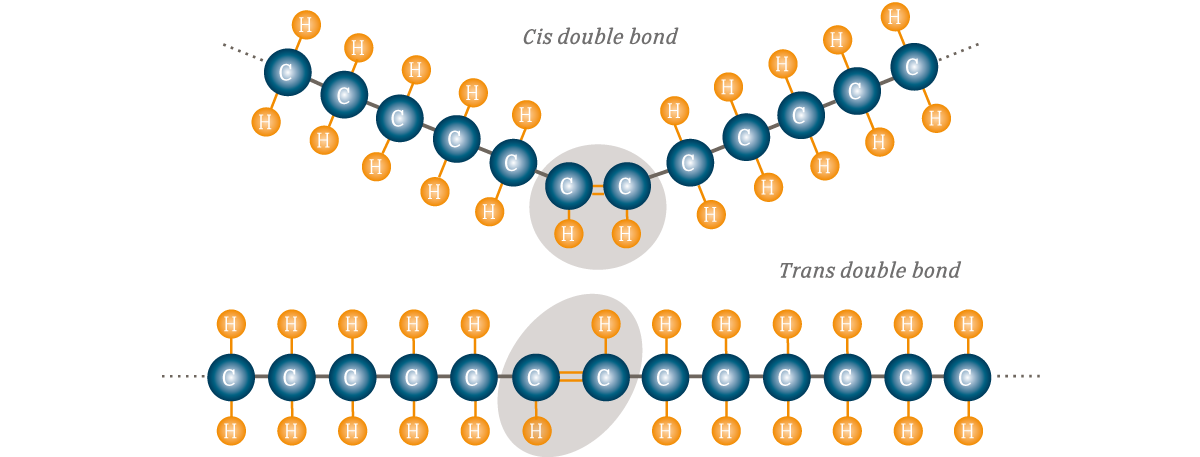Cis and trans fatty acids
Fatty acids can differ in shape (arrangement of the atoms around double bonds in the chain) with the two major categories referred to as ‘cis ’ and ‘trans ’ isomers (Figure 1).
 Figure 1 Cis and trans fatty acids
Figure 1 Cis and trans fatty acids
Naturally occurring fats and oils normally only contain cis fatty acids. Trans fatty acids originate from two main sources; either through alteration of dietary unsaturated fatty acids in the rumen by rumen bacteria (via the biohydrogenation pathway) or from chemical processing (partial hydrogenation) of unsaturated fatty acids (e.g. vegetable oils). Both sources result in different types of trans fatty acids :
- in ruminant products the predominant trans isomer is vaccenic acid (trans-11 C18:1).
- in industrial production, the predominant trans isomer is elaidic acid (trans-9 C18:1).
From a human health perspective, natural trans fatty acids (produced in the rumen) are generally considered beneficial, while industrially-produced trans are thought to be detrimental to health. It is therefore very important to distinguish between natural and industrially-produced trans fats in foods.